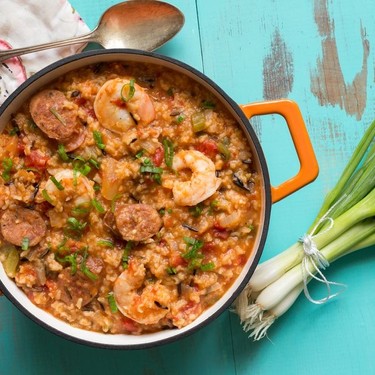Cajun vs. Creole: De-Mystifying Classic Southern Cuisine




The basis of Creole cuisine may be classically French, but you can find influences from West Africa, the Caribbean, and Europe throughout.
Mirepoix is the French standard for a flavor base in a dish. It’s usually composed of onion, carrot, and celery, but the Creole version of mirepoix, referred to as the “holy trinity,” is made up of onion, celery, and bell pepper. Bell peppers were introduced by the Spanish and made their way into the Creole cuisine!
Sicilians that immigrated in the 1880s brought the use of canned tomatoes, a common addition to sauces, as well as the muffuletta, a sandwich now famous in New Orleans and made of salami, provolone, and olive tapenade.
Other ingredients used in Creole cuisine are okra (Africa), cayenne (Caribbean) and file (Native American), which is the name for ground sassafras leaves. These are used by both Creole and Cajun cooking to thicken soups and stews.
Unlike Creole, Cajun cuisine comes from the countryside, specifically the countryside of southwestern Louisiana, AKA Acadiana. The Acadians, while also French, tended to make their Cajun dishes out of ingredients that were more readily available to the trappers, pig farmers, and fisherman that they were. The dishes tend to be hearty, one-pot recipes, made with ingredients found in the countryside, such as wild duck, rabbit, crawfish, salt pork, and corn.
Many of these one-pot dishes are stews (such as seafood gumbo), based on a roux made out of lard or oil, as opposed to the butter-based roux used by Creoles. They're cooked for a long period of time to produce a darker color and more intense taste. Most city folk were not familiar with Cajun cuisine until Chef Paul Prudhomme (RIP) brought it to television in the 1970s. So next time you are in New Orleans, don’t ask where you can get the best Cajun food; you have to leave the city to properly experience it.
The name Creole comes from the Spanish word criollo, which means “native to a place.” Creole cuisine is native to New Orleans, and it has been evolving for almost 300 years. The French founded New Orleans in 1718 but didn’t hold onto it for long. The Spanish gained control in 1962, after the Seven Years’ War, and then the territory was bought by the US government in the Louisiana Purchase.
Throughout the 300 years, New Orleans' status as a port brought the slave trade to the city, and with that, the influence of West African, Caribbean, and European flavors.